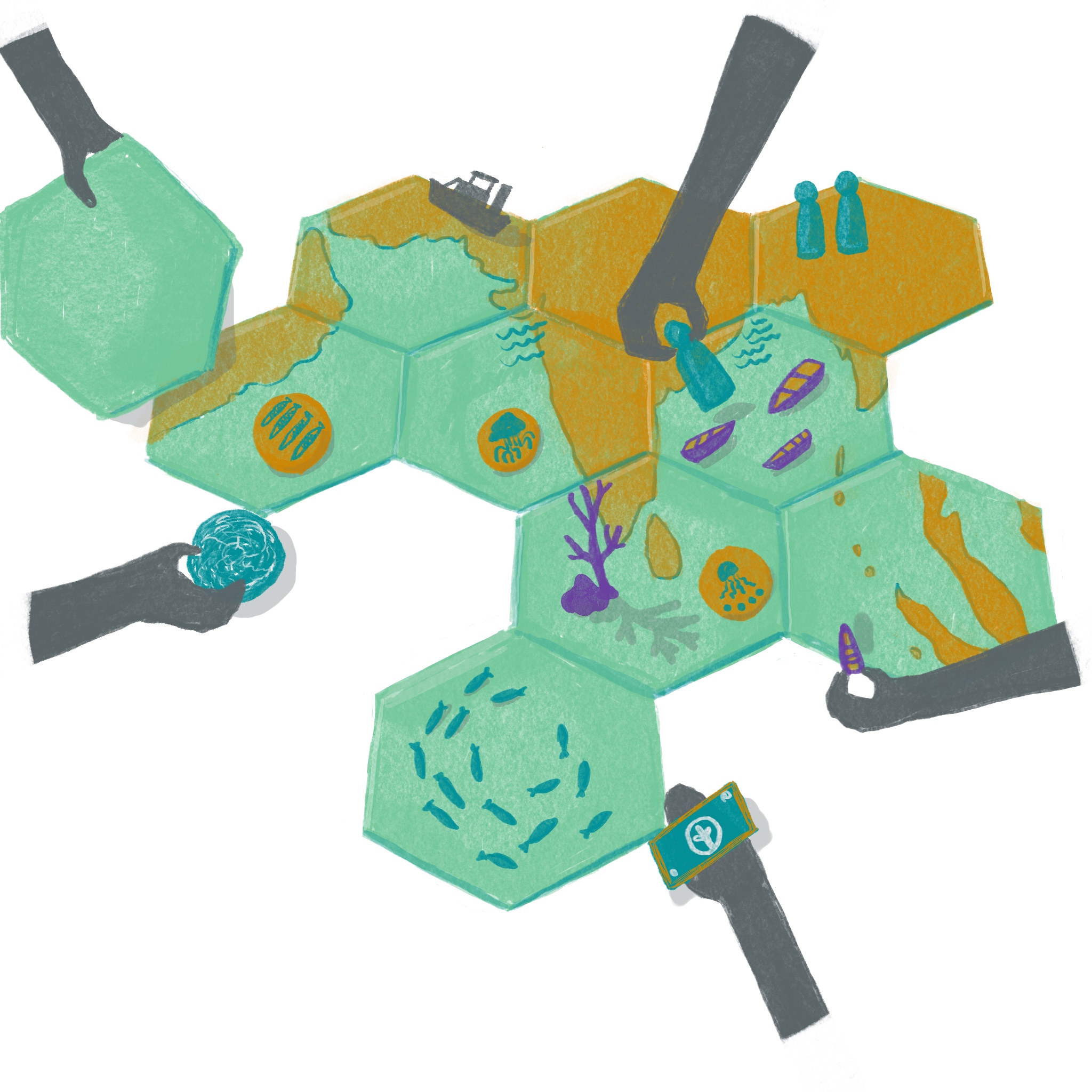The Indian Ocean Region (IOR), spanning from the east coast of Africa to the west coast of Australia, contains around 36 countries and a population of approximately 2.5 billion. The IOR has been a critical crossroads of international trade for centuries and remains so. The security and stability of its shipping lanes and trade routes—passing through the Straits of Hormuz, Bab el-Mandeb, and Malacca, among others—are not only regional issues but issues of global importance.
However, aside from its economic and geopolitical significance, the IOR is confronted with an intensifying environmental and climate crisis, with geopolitical and geoeconomic implications. The Indian Ocean is warming faster than any other ocean globally, leading to sea level rise and extreme weather-related disasters. Increasing pollution levels, ecological catastrophes, and the mounting effects of climate change are increasingly entwining the fates of Indian Ocean states. These common challenges risk destabilising the region’s ecological balance and future prosperity, necessitating immediate concerted action and creative solutions.
Climate impacts
The Indian Ocean is estimated to be warming between 1.7 and 3.8°C, faster than what is anticipated. If greenhouse gases (such as carbon dioxide and methane) are not rapidly decreased, the ocean may continue to warm at an unprecedented and accelerated rate for the rest of the century. Changes in the Asian monsoon circulation and rainfall and marine ecosystems are among the main risks and vulnerabilities brought on by climate change.
Other risks and vulnerabilities include increased intensity of tropical cyclones, inundation of low-lying coastal areas, shoreline erosion, and saltwater intrusion, and degradation of coral reefs and fisheries due to acidification. These effects pose serious threats to livelihoods, as well as to economic, food, and health security.

Rising sea levels threaten the very existence and statehood of low-lying islands such as the Maldives and Mauritius, while coastal erosion and saltwater intrusion endanger agriculture and freshwater resources in most countries in the region. Climate vulnerabilities are driving displacement and migration, as communities lose livelihoods and homes, particularly in coastal areas. In Bangladesh, for instance, displaced communities are increasingly moving to cities, straining urban resources and infrastructure.
Already existing geopolitical tensions—such as fishing disputes owing to fisherfolk transgressing extraterritorial waters, and illegal, unregulated, and unreported fishing—could be further exacerbated by climate change-induced depletion and/or migration of fish stocks. On the geoeconomic front, climate change-induced disasters could damage critical infrastructure such as ports, energy installations, and telecommunications along the coasts, thereby affecting trade, supply chains, and economies.
Not all IOR countries are prepared enough to implement carbon markets that are increasingly becoming a global norm in trade and commerce, as evidenced by the European Union’s Carbon Border Adjustment Mechanism. This presents a fresh set of structural, material, and institutional challenges for these countries.
Climate-induced land loss from rising sea levels and coastal erosion could strain overall maritime governance, by affecting existing maritime boundaries and Exclusive Economic Zones—an area of the ocean, generally extending 200 nautical miles beyond a nation’s territorial sea, within which a coastal nation has jurisdiction over natural resources.
The risks posed to coastal critical infrastructure call for increased investments in resilience and adaptation that will require global and regional cooperation. However, this may also result in increased geopolitical and geoeconomic competition between major powers that could use climate change as an instrument to create influence in the region’s climate-vulnerable countries.
For example, under the China-Indian Ocean Region Forum on Development Cooperation, China proposes to launch the China-Indian Ocean Region Disaster Prevention and Mitigation Alliance and a climate information and early warning system project, among others. It is also gradually considering ramping up investments in renewable energy projects in countries such as the Maldives and Bangladesh. India is also looking to enhance its clean energy partnerships with its IOR neighbours, including Sri Lanka and Mauritius.
India’s role in regional cooperation
As a key player in the region, India can lead efforts in climate diplomacy, fostering cooperation to protect shared resources and ensure a stable, sustainable future. The country’s Security and Growth for All in the Region (SAGAR) vision prioritises climate resilience, ocean governance, and disaster preparedness. It aims to build littoral countries’ capabilities aligning with SAGAR’s principle of promoting sustainable development and deeper regional integration through joint efforts. However, there are gaps in infrastructure modernisation (like ports), regional connectivity, and execution (due to lack of financial and infrastructural resources).
Similarly, India is one of the leading nations in the Bay of Bengal Initiative for Multi-Sectoral Technical and Economic Cooperation (BIMSTEC), which has identified climate change and environment as a key sector of cooperation. India is the lead country for the security sector that also features energy and disaster management as sub-sectors. These are closely intertwined with climate change risks and action, which provides ample scope for designing and implementing collaborative solutions that are not necessarily restricted to military-to-military cooperation alone, with India having already spearheaded many initiatives such as the Indian Navy-led Humanitarian Assistance and Disaster Relief (HADR) operations and exercises.
Apart from leading BIMSTEC Disaster Management Exercises in 2017 and 2020 and a tri-services HADR exercise in 2021, the Indian National Centre for Ocean Information Services provides cyclone forecasts and tsunami alerts to other countries in the Bay of Bengal region, enhancing regional capacity to respond to disasters.
The Indian Ocean Rim Association (IORA) is another platform which promotes regional cooperation on security, trade, disaster resilience, and sustainable development. With 23 member states and 11 Dialogue Partners, the platform consists of many countries that are highly vulnerable to climate change. India’s initiatives within IORA include championing the blue economy, renewable energy, capacity building, marine biodiversity conservation, and climate resilience. India is expected to take over as its next chair in 2025, as the IORA commemorates its 28th anniversary. The country will focus on addressing key concerns related to resource constraints, ocean governance, and disaster risk reduction.
Despite the existence of these regional organisations committed to climate action, there are several gaps in implementation. Many of them have a fragmented and siloed approach towards climate action. For instance, in BIMSTEC, disaster management falls under the security sector with India as the lead, whereas other issues concerning climate impacts and action fall under the Environment and Climate Change Sector, of which Bhutan is the lead. For effective climate action and disaster risk reduction, these two sectors require effective coordination.
Even when institutional mechanisms are in place, bilateral differences, political and/or economic turmoil/instability, project delays and cost overruns, mutual disparities in sharing the burdens of climate action, and the lack of reliable and sustainable financial channels impede effective climate cooperation. It is important for any regional organisation to have a joint assessment of vulnerabilities and requirements in order to attract the right type of funding for the most urgent climate concerns.
One of the ways in which India is looking to fill the financial and technological gap is to engage in diverse models such as triangular cooperation that can enhance climate action by enabling cost-effective and context-specific technology and knowledge transfer to developing countries while leveraging industrialised countries’ institutional, technical, and financial capabilities. This is particularly being promoted through multilateral platforms such as the International Solar Alliance and Coalition for Disaster Resilient Infrastructure for advancing the solar sector and enhancing disaster resilience, respectively. These platforms can be leveraged to boost regional cooperation in the Indian Ocean Region as well, considering there is a huge gap in realising their goals due to regional fragmentation.
The IOR is a theatre of geopolitical, geoeconomic, and geostrategic competition, marked by large military presence and regional fragility. Amidst these tensions, climate cooperation under frameworks such as SAGAR, BIMSTEC, and IORA is the way forward. India’s efforts to project itself as the voice of the Global South would be significantly boosted by more regional climate initiatives in its maritime neighbourhood.






